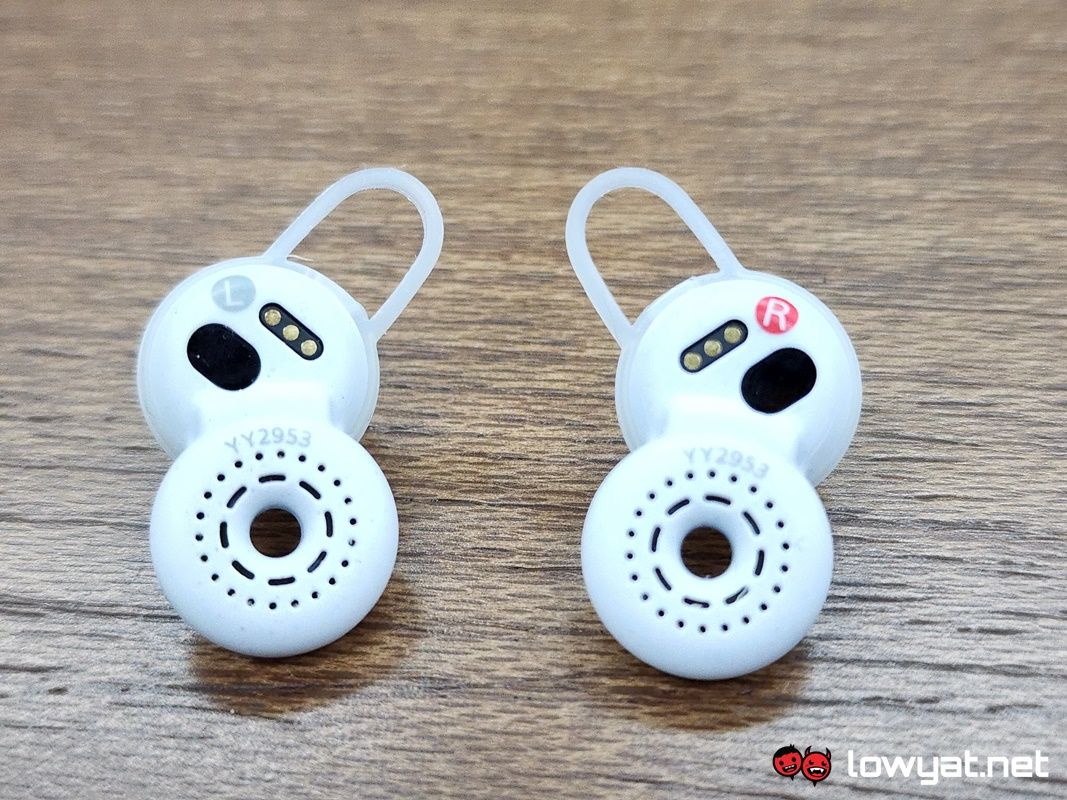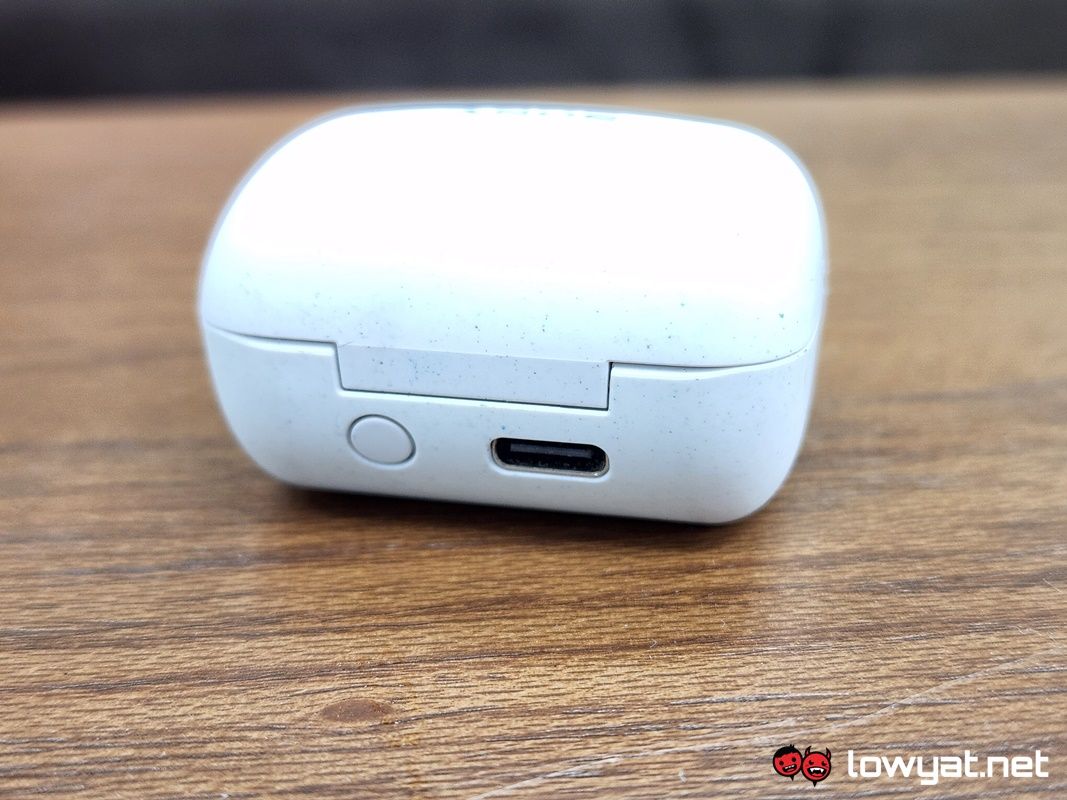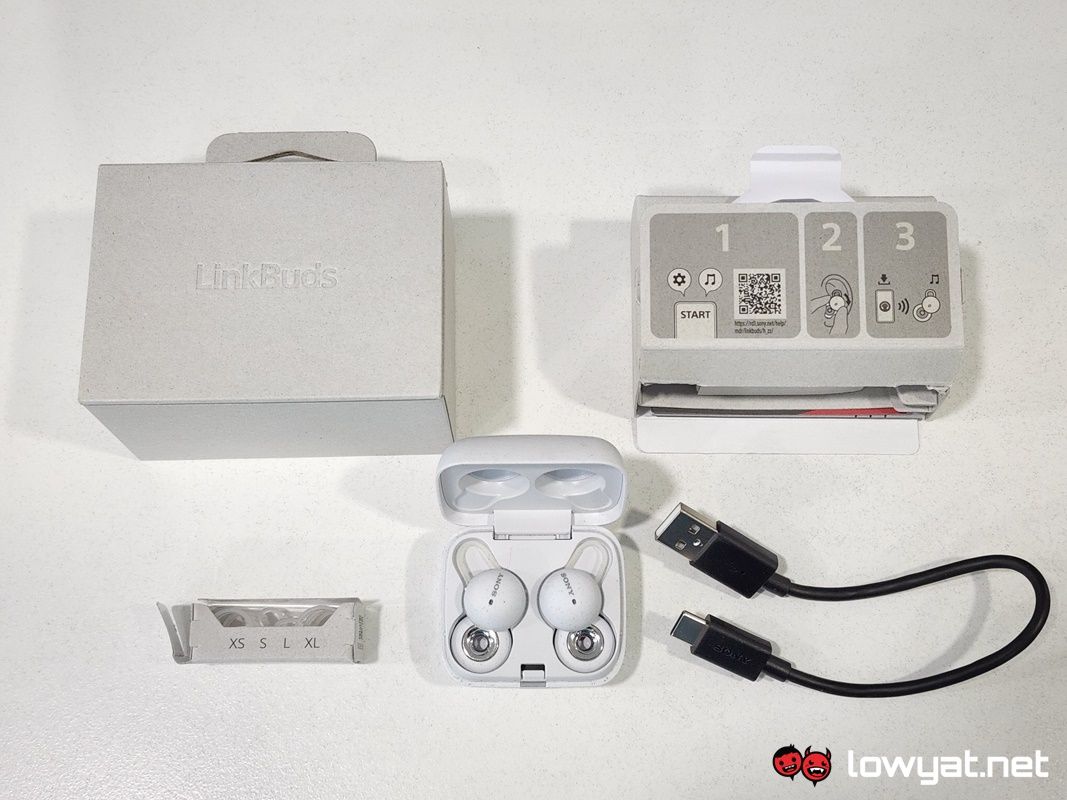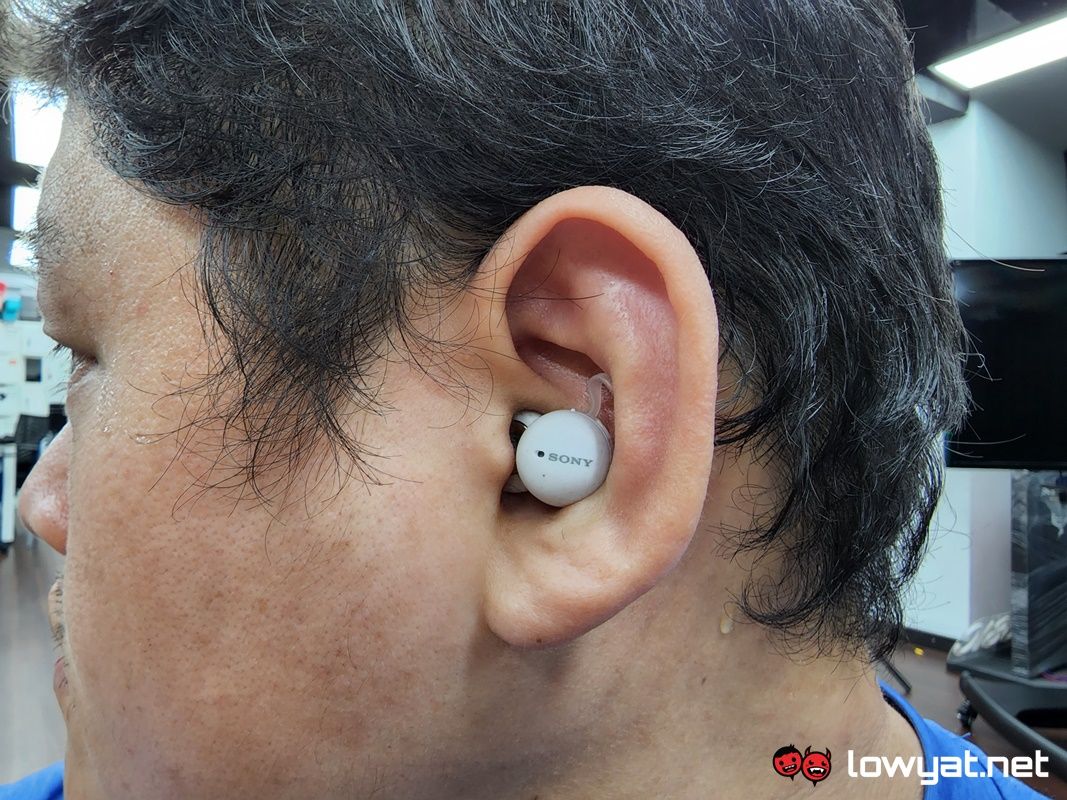The more important question at hand here is: are these earbuds worth investing time in, or are they simply a gimmick for Sony to past the time by, at least until the next generation of its WF series earbuds?
What Is It?
At the risk of overselling it, the Sony LinkBuds are perhaps one of the brand’s most ambitiously designed earbuds, to date. Rather than stick to the traditional, whole-ear, noise isolation design, it sports a unique ring-type shape, with the centre of its diaphragm completely open. As per Sony’s explanation, this design allows for better audio transparency while also negating the need for any form of active noise cancellation (ANC) technology. Still touching on its design, the LinkBuds are also the lightest earbuds that I have used, and that’s due to the product having been built using recycled plastic, as well as its charging case. On that note, the LinkBuds also boast a battery life of 5.5 hours on a single charge, with the casing packing an additional 12 hours when needed.
Is It Any Good?
One of the LinkBuds’ main strengths is its ability to maintain both crystal clear calls and music listening experience. As my daily driver, taking calls on the earbuds was a relatively fuss-free experience, with the person on the other end of the line being able to hear me clearly, and vice versa. For the music listening experience, the LinkBuds are very focused on accentuating the highs and mids, as well as the vocals. This is highlighted in tunes like Jill Barber’s rendition of A Kiss To Build A Dream On, as well as any songs from Lana Del Rey.
Another feature that makes the LinkBuds more interesting is the use of a motion control feature called Wide Area Tap. Due to the smaller-than-average size, I can simply tap the space in front of my ears to control their functions, all without touching the earbuds themselves. It is a novel feature, but not one without its own set of flaws, as I’ll explain in the next section.
The Bad Stuff. Tell Me.
While the LinkBuds focus on the mids and highs, there is a noticeable lack of focus on the lows, meaning that songs and tunes with a balance of all the pitches sound incomplete and just not full. This is evident in songs such as Nina Simone’s Feeling Good, Hozier’s Shrike, and Yoko Kanno and the Seatbelts’ Digging My Potato. Without some emphasis or focus on the lows, the tracks sound hollow and lacking. As I mentioned regarding the Wide Area Tap, the function is still clearly a work in progress. While it is convenient for me to tap the side of my head to engage in its dedicated functions, I do still encounter some hit or miss situations with it. Having said that, the feature is also weirdly sensitive to other bodily functions; burping or yawning can somehow set it off, which is usually followed by outcries and cursing, especially when I’m in the middle of a call.
Should I Buy It?
For its asking price of RM849, I won’t say that the Sony LinkBuds are a difficult buy. What I will say, however, is that they are an acquired taste and not every listener’s cup of tea. I say this because it clearly isn’t mine. The overall audio quality and experience aside, I will acknowledge that the LinkBuds is unique and interesting, both in its design and feel once you’ve inserted it into your ears. Having said that, Sony still has some ways to go with the built-in motion sensors on the buds and if its current state is anything to go by, I am certain the brand could get it up to working order before my next burp or yawn. Photography by John Law.




